Types of Plaid Patterns: From Classic to Contemporary
by Teejay Smith on Mar 02, 2024
Table of Content
I. Introduction
Types of Plaid patterns have long been cherished for their timeless appeal, cultural significance, and versatile aesthetic. Originating from humble beginnings in the Highland Scottish, these types of plaid patterns have transcended geographical and cultural boundaries to become a ubiquitous feature in fashion, interior design, and various other industries.
From the iconic tartans of Scottish clans to the vibrant Madras checks of India, each types of plaid patterns holds a unique story and significance. Whether you're a seasoned enthusiast or a curious newcomer, join us as we embark on a fascinating exploration of the myriad types of plaid patterns that adorn our world.
A. Definition and Overview of Types of Plaid Patterns

Plaid patterns are a type of plaid that is characterized by its distinctive pattern of intersecting horizontal and vertical stripes of varying widths and colors. The plaid design is formed by interlacing various hues of threads in a particular arrangement. The plaid fabric is often associated with Scottish tartans, but it can also be found in a variety of other styles and colors.
It is commonly used in clothing, such as flannel shirts and kilts, as well as in home decor items like blankets and curtains. The plaid fabric is known for its durability and warmth, making it a popular choice for cold-weather clothing and accessories. Types of plaid patterns can be made from a variety of materials, including wool, cotton, and synthetic fabrics.
B. Brief History of Types of Plaid Patterns
Types of plaid patterns have a rich history dating back to the 16th century in Scotland. Initially, types of plaid patterns was used to describe the type of woolen material used for making kilts. However, as time passed, it evolved to refer to the recognizable design of intersecting lines and colored blocks that we commonly associate with the term.
C. The difference between “Plaid” and “Tartan”
Although plaid vs tartan have many similarities, there are distinct differences between the two words that should be noted:

The word “tartan” refers to a type of fabric with a specific types of plaid patterns of colored checkboxes and intersecting lines. It holds significance as it is associated with a particular clan. This fabric is primarily made from 100% pure worsted wool and is commonly used to make kilts, highland wear accessories, and clothing.
On the other hand, “plaid“ is a pattern consisting of vertical and horizontal stripes of varying widths and colors that intersect to create a grid-like design. It can incorporate two or more colors and is often linked to flannel shirts. There are many plaid and checked patterns available, many of which are ideal for a farmhouse style.
While plaid and check patterns are more prevalent in modern fashion, tartan remains a prominent feature in traditional Scottish attire and is closely tied to Scottish heritage and customs.
II. Types of Plaid Patterns
Each types of plaid patterns can come in various forms, with the most popular being traditional plaids. The traditional plaids typically featured shades of green, blue, and red, which were made from natural sources. These specific types of plaid patterns were often linked to certain areas in Scotland and were utilized to distinguish individuals belonging to different clans.
A. Buffalo Check/Plaid

Buffalo check/plaid is a popular types of plaid patterns design that originated in North America. It is known for its striking, symmetrical pattern featuring two colors, typically red and black. This types of plaid patterns was first utilized for blankets and jackets worn by lumberjacks and hunters.
B. Glen Plaids

Glen plaids are a particular types of plaid patterns design characterized by a delicate and asymmetrical arrangement of intersecting lines. The squares have a crisscross pattern that gives the impression of woven fabric. Named after Prince of Wales Edward VIII, who favored this design for suits, it is also referred to as the Prince of Wales plaid. This style is commonly utilized in the creation of suits, trousers or curtains.
C. Houndstooth

Houndstooth is an intricate design consisting of jagged lines that form a unique geometric pattern. It is typically seen in black and white, but can also be found in various colors. This types of plaid patterns is commonly used in men's suits and jackets, but it can also be incorporated into women's clothing such as skirts and blouses. It is a great choice for those looking to make a daring fashion statement.
The Houndstooth pattern is known for its sharp, pointed edges and has origins dating back to around 300 BC according to history of Sweden. However, Scottish historical records also attribute this distinctive plaid design to the Scots, alongside tartans and checks. The name "Houndstooth" is said to have originated from a resemblance to a dog bite. In cases where the pattern is smaller, it may sometimes be referred to as "puppytooth".
D. Tattersall

Tattersall is a traditional design characterized by slim, evenly distributed stripes that intersect at right angles to create a checked pattern. The stripes can vary in color, but they are typically muted shades such as beige, gray, or blue. Tattersall is commonly seen on men's dress shirts, but it can also be found on other garments like jackets, ties, and even socks. This types of plaid patterns is ideal for those who prefer a subtle and refined appearance.
E. Gingham

Gingham is a timeless design that consists of a checkered pattern, with evenly sized stripes in vibrant colors such as red, blue, or green. It is often associated with summertime and is commonly used in clothing items like dresses, shirts, and shorts, as well as in home decor pieces like tablecloths and curtains. This types of plaid patterns is ideal for those looking to add a burst of color to their wardrobe or living space.
Types of plaid patterns remain popular today and can be found on a variety of clothing and accessories, including jackets, coats, shoes, and hats. Whether you prefer traditional Scottish tartans or bold buffalo check designs, there is a types of plaid patterns available for everyone.
F. Modern-Day Plaids
Plaid designs have evolved significantly since their beginnings in 16th century Scotland. Nowadays, contemporary plaids are commonly found in a wide range of clothing and home furnishings. From sweaters to bedding to upholstery, plaids have become a fundamental element in the realm of fashion and interior design.
J.Windowpane Plaids

The windowpane plaid is a trendy types of plaid patterns design that consists of a large grid pattern. It is commonly seen in well-fitted garments such as suits, blazers, and dress pants. Its name is derived from its similarity to a windowpane. Additionally, this types of plaid patterns can also be seen in sweaters and sweater vests, typically crafted from wool or cotton, making them ideal for layering in colder seasons.
H. Madras Plaids

Madras plaids, originally from India, are known for their vibrant and lively design. They are commonly associated with warm weather attire and are typically made from lightweight cotton fabrics. The combination of bright colors and bold patterns in Madras plaids make them a popular choice for beachwear and casual summer dresses.
In addition to clothing, Madras plaids can also be found in home decor such as bedding and furniture. These items often feature a mix of different patterns and colors, giving off a playful and cheerful vibe.
III. How versatile are Plaid Patterns?
Types of plaid patterns are highly versatile and have been used in various contexts, styles, and cultures throughout history. The versatility of types of plaid patterns is evident in their ability to adapt to different fashion trends, home decor styles, and even cultural symbolism. Here are some aspects highlighting the versatility of types of plaid patterns:

A. Using Plaid in Fashion
Plaid in fashion is a timeless and versatile choice that has the power to elevate any wardrobe. Whether it's a classic tartan or a contemporary interpretation, types of plaid patterns offer a rich visual texture that adds depth to outfits. Traditionally, types of plaid patterns is often associated with heritage and sophistication, adorning tailored suits, skirts, and coats.
On the other hand, incorporating plaid into casual wear brings a touch of laid-back charm, with flannel shirts, scarves, or even plaid sneakers adding a pop of personality. The beauty of plaid lies in its adaptability—mixing and matching different colors and styles allows for endless outfit possibilities. It's a fashion statement that effortlessly transitions from cozy and casual to polished and chic, making plaid a perennial favorite on the runway and in everyday street style.
B. Plaid in Home Decor
Bringing the timeless charm of types of plaid patterns into home decor is like adding a touch of warmth and sophistication to your living space. Plaid patterns, whether in classic tartans or modern interpretations, work seamlessly in various home settings. Picture cozy plaid throws draped over a sofa, creating an inviting and comfortable atmosphere. Types of plaid patterns accent pillows or bedding can transform a bedroom into a cozy retreat, while plaid curtains or rugs add a subtle yet stylish touch to any room.
The versatility of types of plaid patterns allows it to adapt to different decor styles—whether it's rustic, traditional, or contemporary. From tablecloths to wallpaper, plaid brings a sense of familiarity and character to spaces, making it a go-to choice for those seeking a blend of timeless elegance and homely comfort.
C. Plaid in Art and Design
Plaid in art and design serves as a captivating canvas for creativity, offering a platform for innovative expression. Artists and designers can play with the classic grid of intersecting lines, infusing plaid with unique patterns, colors, and textures. Types of plaid patterns becomes a medium to convey emotion, tell stories, or explore cultural narratives.
In graphic design, types of plaid patterns can be employed to add depth and visual interest, creating striking backgrounds or focal points. The adaptability of plaid allows it to seamlessly integrate into various design disciplines—be it fashion, interior design, or even digital art. Whether it's a traditional tartan or a contemporary, abstract interpretation, plaid in art and design is a versatile tool that sparks imagination and adds a touch of personality to any creative endeavor
D. Plaid in Pop Culture
Plaid has become an iconic symbol in pop culture, transcending its traditional roots to become a fashion statement and cultural touchstone. From the grunge aesthetic of the '90s, where flannel shirts adorned with types of plaid patterns were a defining element, to the timeless allure of plaid skirts in schoolgirl uniforms, this types of plaid patterns has woven itself into the fabric of popular fashion.
Types of plaid patterns has also made its mark in music, particularly associated with punk and alternative rock genres, adding a rebellious and edgy flair to stage outfits. In film and television, characters often don plaid to convey specific personas—whether it's the rugged lumberjack or the preppy, buttoned-up look. Beyond fashion, types of plaid patterns appear in diverse contexts, from album covers to interior design sets, cementing their status as a symbol of versatility and cultural resonance
IV. Conclusion
In reflecting upon the journey through the diverse and versatile realm of types of plaid patterns, it's evident that this timeless motif is a true chameleon in the world of design. From the classic allure of tartans, each narrating a story of heritage, to the contemporary interpretations that breathe innovation into tradition, types of plaid patterns showcase an expansive spectrum of styles. Their adaptability transcends the confines of fashion, seamlessly weaving into various aspects of our lives, from home decor to art and pop culture.
Frequently Asked Questions
Why is it called a plaid pattern?
To be precise, the types of plaid patterns we know as plaid is actually called “tartan.” Tartans are weaves of alternating bands woven at right angles, while “plaid” originally referred to the heavy woolen clothes that bore this pattern. Scots would use them as blankets or sling them over their shoulders
What is the most famous types of plaid patterns?
Tartan plaid is most certainly the most famous and recognizable member of what we consider today as the plaid family. This pattern is most likely the first that comes to mind when thinking of plaid since we see so many historical tartans (and variations of them) in the world today.
Why is types of plaid patterns so popular?
It returned as a flexible fashion option that can be worn in every manner possible, be it as a sophisticated outerwear item, an edgy skirt choice, or a statement purse. All thanks to its distinctive design and various style incarnations over the years.
What's the difference between plaid and gingham?
Plaid is a woven fabric that uses various colors that go in horizontal and vertical directions whereas gingham is almost always two colors. A darker hue paired with white, cream, or a lighter variant of the dark hue

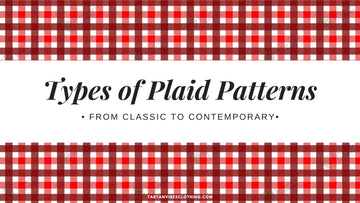

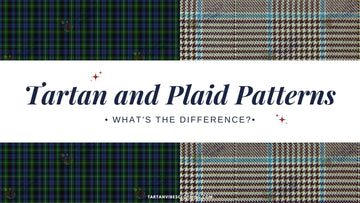
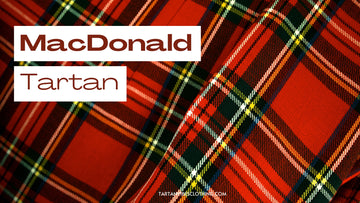
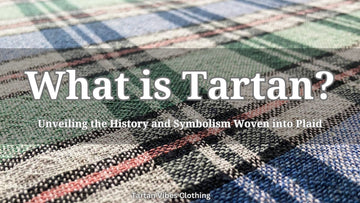
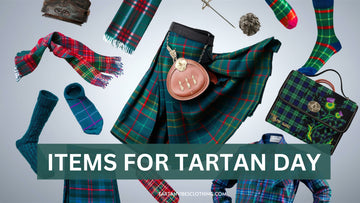
great article!